Embarking on the artful journey of crafting embroidery quilt blocks requires thoughtful consideration of the fabric used as the canvas for these stitched masterpieces.
The choice of fabric not only influences the visual appeal of the finished quilt but also affects the ease of stitching and overall durability.
From traditional cotton broadcloth to linen blends, each fabric type brings its unique qualities to the creative process.
In this exploration, we delve into the myriad options and characteristics that define the ideal fabric for embroidery quilt blocks, aiming to guide and inspire both seasoned stitchers and enthusiastic beginners in their quilting endeavors
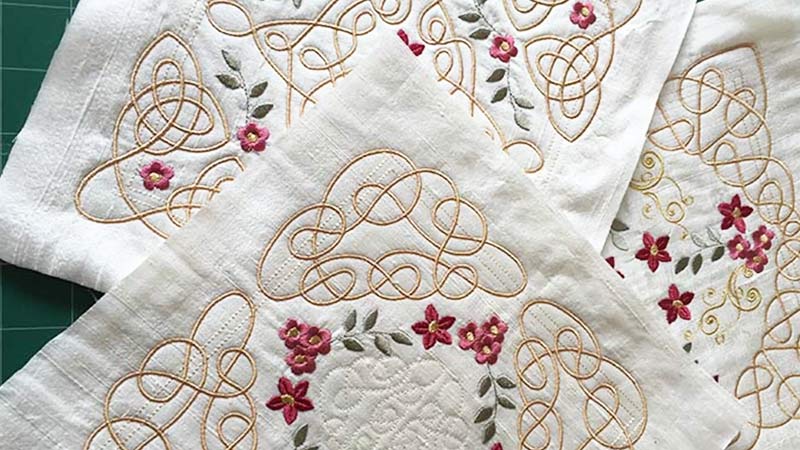
What Kind Of Fabric For Embroidery Quilt Blocks?
Embarking on a journey of crafting beautiful quilt blocks to embroider opens up a world of possibilities. The choice of fabric is crucial for achieving both the desired aesthetic and ensuring a smooth stitching experience.
Here are five kinds of fabric suitable for embroidery quilt blocks:
Cotton Broadcloth
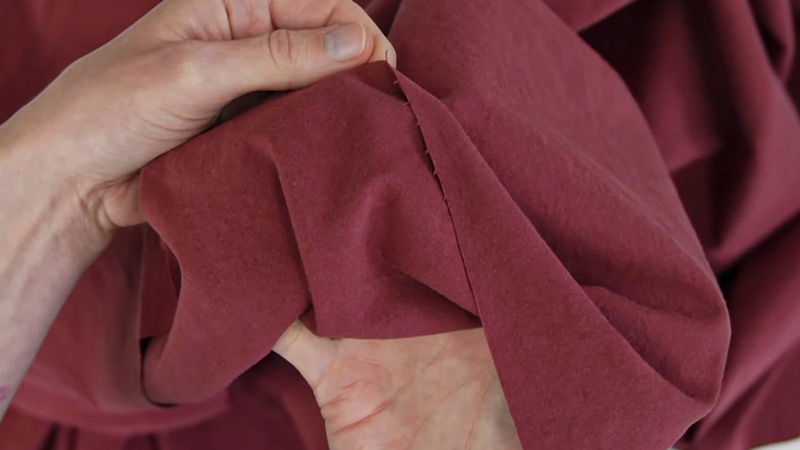
Known for its smooth and tightly woven texture, cotton broadcloth is an excellent choice for embroidered quilt blocks. Its even weave provides a stable foundation for intricate embroidery, allowing for precise stitches and vibrant thread colors to shine.
Linen Blend
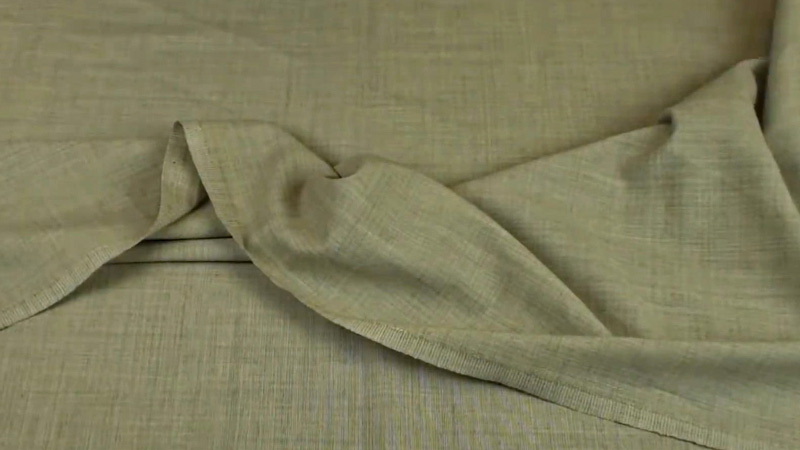
Combining the breathability of linen with the stability of other fibers, linen blend fabric offers a unique texture for quilt blocks to embroider.
Its slightly rustic appearance adds character to embroidered designs, making it a popular choice for both traditional and contemporary quilt projects.
Muslin Fabric
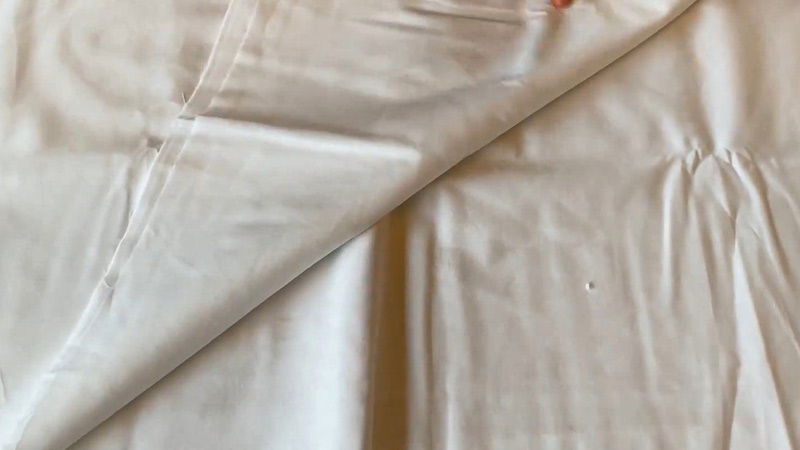
With its plain weave and natural color, Muslin provides a versatile canvas for embroidery quilt blocks. Its lightweight and soft nature makes it easy to work with, allowing the embroidered details to stand out. Muslin’s affordability also makes it an accessible option for various projects.
Quilter’s Cotton
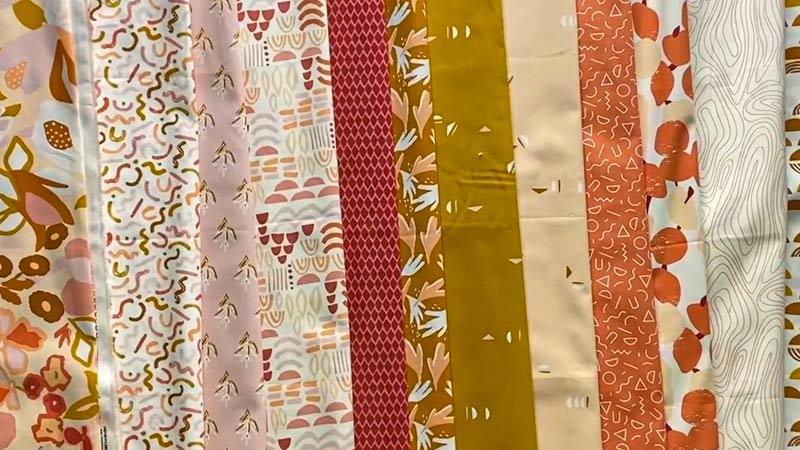
Specifically designed for quilting, quilter’s cotton is a favorite for quilt blocks to embroider. Its medium weight, tight weave, and wide range of available colors make it ideal for showcasing intricate embroidery patterns, ensuring longevity and durability in the finished quilt.
Calico Fabric
Calico, characterized by its small, printed designs on a light-colored background, is a charming option for embroidered quilt blocks.
Its playful patterns add a whimsical touch to quilting projects, and its soft, easy-to-handle nature makes it a favorite for both beginners and experienced stitchers alike.
Choosing the right fabric for your quilt blocks to embroider ensures a harmonious marriage between embroidery and quilting, resulting in stunning and enduring creations.
Each fabric type brings its unique qualities, contributing to the overall beauty and character of the finished quilt.
How To Do Embroidery And Quilting?
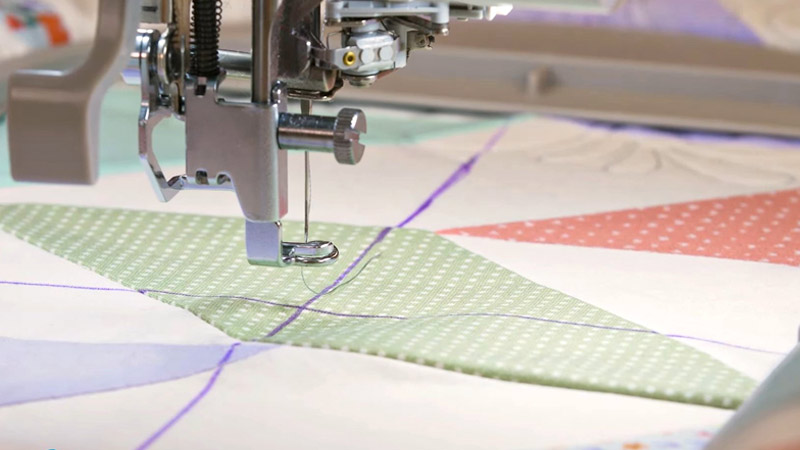
Embarking on the fusion of patchwork embroidery and quilting opens up a world of creative possibilities. Here are five ways to seamlessly combine these two crafts and create stunning embroidered quilt masterpieces:
Designing Embroidery Blocks
Begin by selecting or creating embroidery designs that complement your quilt theme. These can range from intricate patterns to personalized motifs.
Focus on stitching these designs onto individual fabric blocks, ensuring each block becomes a unique canvas for your embroidery quilts.
Incorporating Patchwork Patterns
Integrate patchwork patterns into your quilt design, using a variety of fabrics that complement your chosen embroidery blocks. The interplay of different textures and colors in your quilted embroidery will add depth and visual interest to the overall composition.
Quilting Around Embroidery
Practice quilting techniques that enhance rather than overshadow your embroidered blocks. Whether opting for free-motion quilting or specific quilting patterns, carefully navigate around the embroidered elements to accentuate their beauty within the embroidered quilt.
Combining Appliqué and Embroidery
Explore the fusion of appliqué and embroidery to create intricate designs. Apply fabric shapes onto your quilt blocks, securing them with stitching, and then embellish these shapes with embroidery.
This method allows for harmonizing different techniques in your embroidery blocks.
Embellishing with Embroidery Stitches
Elevate your quilting project by embellishing patchwork seams and borders with additional embroidery stitches.
Consider using decorative stitches to accentuate the quilt’s structure, adding a touch of flair to your embroidery quilts without overwhelming the overall design.
By combining the artistry of patchwork embroidery and quilting, you can craft one-of-a-kind creations that showcase the beauty of both techniques.
Each stitch and patchwork piece contributes to the narrative of your embroidery quilt, resulting in a work of art that seamlessly blends tradition and innovation.
FAQs
How does the weight of the fabric affect embroidery on quilt blocks?
Lighter-weight fabrics may require stabilizers to support embroidery. Choose a medium-weight fabric like quilter’s cotton for optimal balance in embroidery quilt blocks.
Is there a specific fabric best suited for intricate embroidery designs on quilt blocks?
Fabrics with a tight weave, like cotton or linen blends, provide a smooth surface for intricate details, making them ideal choices for showcasing complex embroidery on quilt blocks.
Can I mix different fabrics in a single quilt block for embroidery?
Yes, combining fabrics adds visual interest. Ensure the fabrics have similar weights and textures to maintain a cohesive appearance in embroidery quilt blocks.
Does the color of the fabric impact the visibility of embroidery stitches on quilt blocks?
Lighter fabrics enhance stitch visibility, making details more prominent. Consider fabric color contrast when planning embroidery designs for striking results on quilt blocks.
Are pre-treated fabrics suitable for embroidery quilt blocks?
Pre-treated fabrics, like pre-washed cotton, can be used for quilt blocks. Ensure they remain smooth and stable, providing an optimal foundation for successful embroidery projects.
Conclusion
In the rich tapestry of quilting, the question of “What kind of fabric for embroidery quilt blocks?” resolves in the harmonious marriage of creativity and functionality.
Whether opting for the smooth canvas of cotton broadcloth, the rustic charm of linen blends, or the playful patterns of calico, each fabric choice contributes to the overall personality of the quilt.
As stitchers embark on their projects, they find that the carefully chosen fabric accommodates the intricate details of embroidery and plays a pivotal role in transforming a simple quilt into a cherished work of art.
The journey of selecting the perfect fabric becomes a significant chapter in the story of every embroidered quilt block.
Leave a Reply